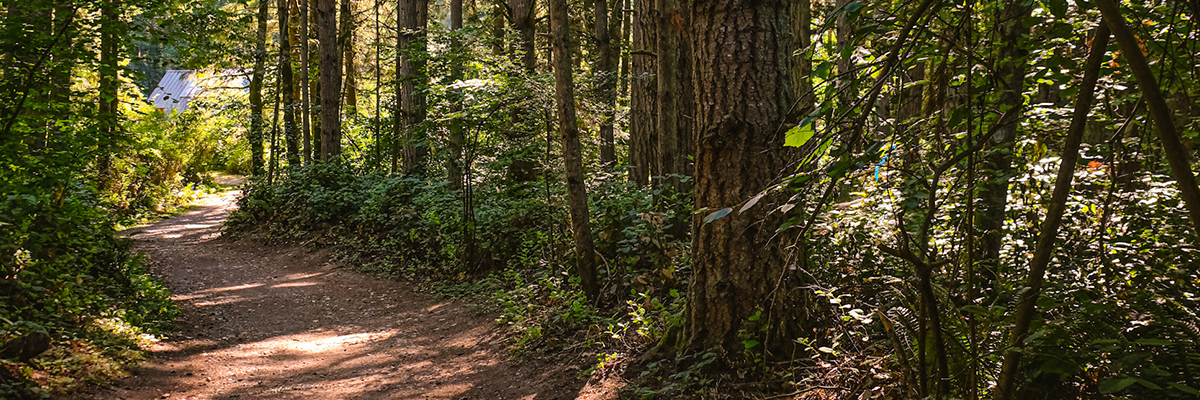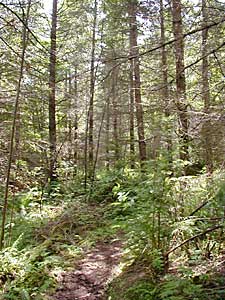Explore FSC Certified Forests in King County and Beyond

King County Parks and Recreation manages six sites under NNRG’s FSC group certificate, combining forest health initiatives with public recreation. These forests offer a range of activities, including hiking, biking, horseback riding, birdwatching, and picnicking.
The Forest Stewardship Council® (FSC®) certification is a voluntary, market-driven system that ensures wood products come from responsibly managed forests. By choosing FSC-certified products, consumers can support sustainable forestry practices. NNRG facilitates access to this certification through a group certificate, which benefits family woodland owners, small timber businesses, nonprofits, educational institutions, conservation groups, municipal watersheds, and public parks.
This summer, we invite you to explore the FSC-certified forests in King County, enjoying the natural beauty while learning about their forest management practices. Large forestry projects often have many short-term impacts and may look rough for the first few years after completion. This is part of managing a healthy forest, and they appreciate your patience with the progress! Learn more below.

The 440-acre Center is on Vashon Island, with 10 miles of trails to enjoy. The site consists of forested stands, meadows, a pond, and wetlands that form the headwaters of Judd Creek. The center provides excellent birdwatching, supporting over 70 species of birds.
Multi-use trails are available for hiking, horseback riding, and mountain biking. Locals designed and built the Forest Cathedral Picnic Shelter using wood from the island. The center is the only public land on Vashon for hunting, with half of the center open seasonally for deer hunters. With no natural predators on the island, the Washington Department of Fish and Wildlife oversees this as a tool to manage a growing deer population.
In 2024, the county will thin about 45 acres to improve forest health and increase habitat. The following year, they will plant trees to increase forest diversity. Thinning out mid-aged Douglas fir will allow for the remaining trees to thrive. You can see the results of similar projects (2008 and 2014) on the west of the Cemetery trailhead and along the Grinder trail. Trails next to and within the 45 acres will be closed for about 4-6 weeks. All trails accessible from the Westside Highway entrance and some trails accessed via the 188th and Cemetery Trailheads will remain open. They will also remove red alder over 9 acres. These short-lived species will be replaced with longer-living conifers and some hardwoods. You can see the results of a similar project from 2014 along the Middle Fork Trail.
Between Hobart and North Bend, Taylor Mountain connects the Cedar River Watershed to the Tiger Mountain State Forest. The 1,942-acre forest includes views of Mount Ranier, forested wetlands, and wildflower meadows. Taylor Mountain has two major tributaries, providing five miles of salmon spawning habitat. The forest also provides almost thirty miles of multi-use trails for hiking, horseback riding, and mountain biking.
Earlier in the year, the county’s foresters worked in two areas to create a more diverse forest to adapt to warmer and drier weather brought on by climate change. Those areas include a 59-acre area between Holder Knob Trail and Road A. This area is primarily bigleaf maple with some cottonwood and red alder. The second area is 39 acres, located between Carey Creek and Road K, with the same tree species mix. They were replanted with longer-living mixed conifers. The revenue from timber sales supports these restoration efforts. Watch for future projects in late 2025 to early 2026.
Located near Black Diamond, WA, the 1,240-acre forest has 17 miles of trails for non-motorized uses such as hiking, horseback riding, mountain biking, and birdwatching. The open space holds a protected migratory corridor called the Wildlife Habitat Network and hosts a variety of habitats, such as streams, peat bogs, and wetlands. The site covers two watersheds: the Cedar River and the Green River. Fish-bearing streams are valuable for cutthroat trout, coho, sockeye, and chinook salmon. The presence of beaver and freshwater mussels indicates good water quality. A site map can be found here.

Located a few miles from Maple Valley, WA, this 250-acre forest highlights a former industrial timber site now open to hiking and mountain biking. The forest has about 20 miles of multi-use trails. The site was acquired to protect the land from development and restore the forest’s resilience to disease, pests, drought, and wildfires. To protect this forest, active management will occur over the next thirty years, including thinning, removing invasive species, and planting native species. The site map can be found here.
Ravensdale Retreat Natural Area
Located near Ravensdale, WA, in the Rock Creek Valley, this upland site contains conifer forests, some upland deciduous areas, wetlands, and patches of meadows. These habitats support western red cedar, black cottonwood, and big leaf maple. The 145-acre site was replanted following harvests in the 1980s. The trails here are used for hiking and horseback riding. Community groups, including the Backcountry Horsement and Friend of Rock Creek Valley, help maintain the trails and control invasive species. See hiking information here.
If you hike one of these FSC-certified areas, we’d love to hear what you enjoyed most. Check the King County Parks volunteer page for opportunities to support restoration efforts.
In addition to King County, many FSC-certified forests are open to the public throughout Oregon and Washington. See our list below to learn more.
- Beazell Memorial Forest – King’s Valley, OR
- Black Diamond Open Space – Black Diamond, WA
- Bratton Canyon – Woodland, WA (temporarily closed)
- Central Cascades Forest – Cle Elum, WA
- Capitol State Forest – Olympia, WA
- Carkeek Park – Seattle, WA
- Cemetery Reach Natural Area – Ravensdale, WA
- Chehalem Ridge Nature Park – Forest Grove, OR
- Clearwater Forest Reserve – Clearwater, WA
- Cowling Creek Forest Preserve – Suquamish, WA
- Discovery Park – Seattle, WA
- Elbe Hills State Forest – Eatonville, WA
- Ellsworth Creek Preserve – Willapa Bay, WA
- Green Mountain State Forest – Crosby, WA
- Grover’s Creek Preserve – Indianola
- Henry’s Ridge Open Space – Black Diamond, WA
- Hoh River Recreation and Conservation Area – Jefferson County, WA
- Island Center Forest – Vashon Island, WA
- Jefferson Land Trust’s Bulis Preserve – Port Townsend, WA
- Lake Rosannah – La Center, WA
- Nisqually Land Trust‘s Mashel River Protected Area – Yelm, WA
- Northwest Trek – Eatonville, WA
- Ravensdale Retreat Natural Area – Black Diamond, WA
- Schmitz Park – Seattle, WA
- Seward Park – Seattle, WA
- Tahoma State Forest – Ashford, WA
- Tahuya State Forest – Belfair, WA
- Tarboo Wildlife Preserve – Quilcene, WA
- Taylor Mountain Forest – Hobart, WA
- Tiger Mountain State Forest – Issaquah, WA
- Turtleback Mountain – Orcas Island, WA


Leave a Reply